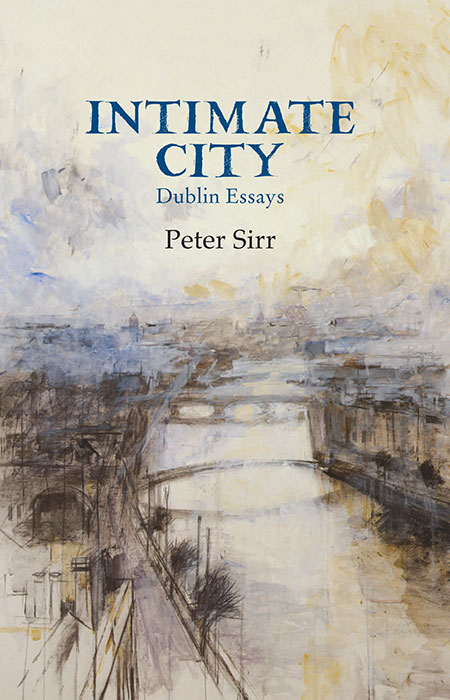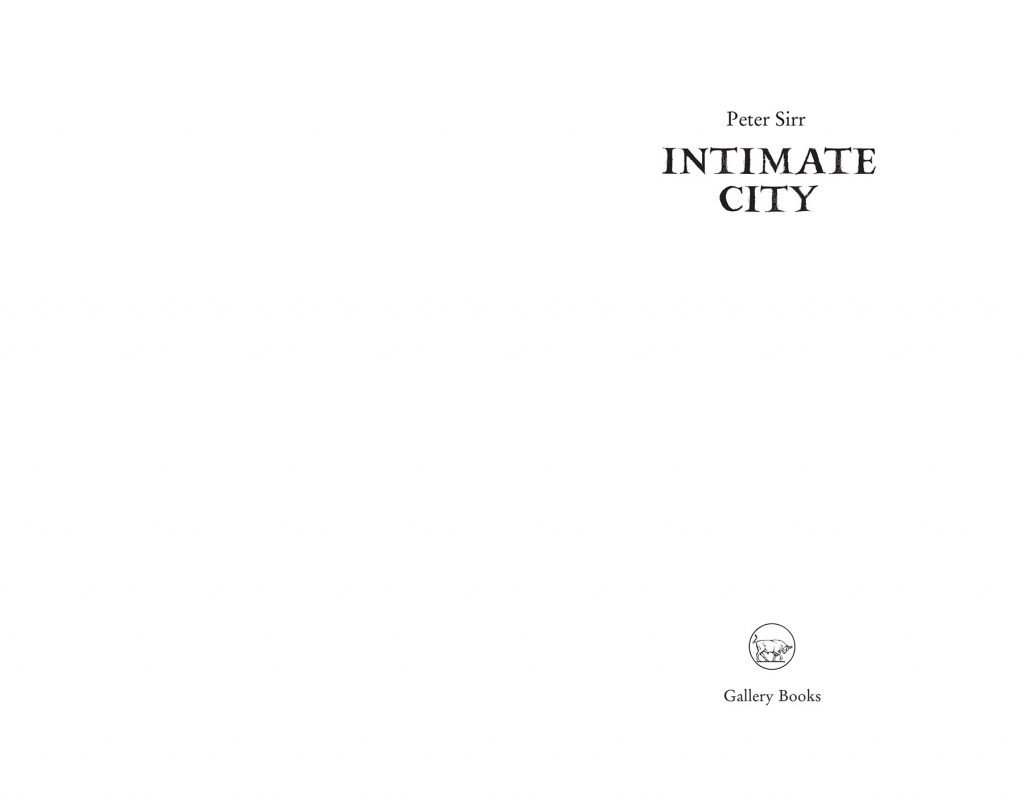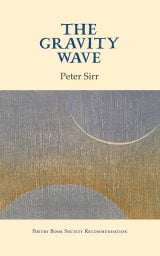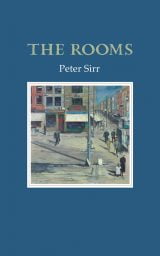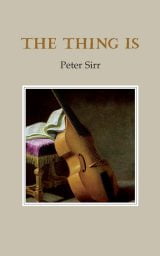Intimate City: Dublin Essays, Peter Sirr’s rich and rewarding essays reflect a long-standing attachment to and obsession with the Dublins of the past and present: the contemporary city but also the ancient walled city or the city mapped in 1756 by a French Huguenot or the one enumerated in 1803. Present and past, personal and public, memory and invention intersect in a book enlivened by the sense of the city as a layered place where people have lived and died for more than a thousand years.
The essays in Intimate City: Dublin Essays wander through the physical space of the author’s inner city neighbourhood and the speculations of developers, but also the ‘mind city’ of writers, poets, artists and ghosts. Often at stake too is the contested city of competing narratives and visions where battles are fought over what and who is celebrated or commemorated. Tracing old routes, tracking new ones, adventuring in streets, houses and rooms, these essays collectively amount to ‘a chain of linked desires’: to walk the city, ‘ to drink in details . . . listening for the steps of those who’ve been here before . . . to greet time, stop it on the pavement before it scurries off’.
Sirr’s book also makes me want to revisit places where I have missed or only half-noticed the things he describes. In a chapter on “the pleasure of small streets”, he lists several in the north inner city including Fontenoy Street, which I have strolled through only because it was one of James Joyce’s many addresses on the family’s downward economic trajectory. — Frank McNally, The Irish Times
From Sirr, with love: A poet’s search for Dublin’s soul
Before doing a broadcast interview with him at the Museum of Literature Ireland (MoLi) earlier this week, I had never knowingly met Peter Sirr. But our paths must have crossed many times over the years. For one thing, we live in the same postal district: Dublin 8. For another, the places he describes in his well-named new book, Intimate City, were already so familiar to me that I feel like I have been following him around on his researches.
The difference is that, with his much-published poet’s eye, he puts names to emotions that have also passed through my mind – but went unidentified.
Take this, for example, from one of his essays: “There is a particular kind of desolation than can only be achieved by curtains. . .” I know those curtains well, common to small towns as well as city backstreets: “ancient net curtains rotting into the windows whose rooms they protect, curtains that proclaim their dejection to everyone curious enough to look, curtains that have given up”. Or this, on a similar theme, more particular to Dublin: “The most neglected houses are those with the most bells.” I know those bells too, having lived on the other side of a few. Perhaps economists should devise a new kind of bell curve, to map the decline of once grand houses that became investment opportunities.
On the other hand, Sirr’s book also makes me want to revisit places where I have missed or only half-noticed the things he describes. In a chapter on “the pleasure of small streets”, he lists several in the north inner city including Fontenoy Street, which I have strolled through only because it was one of James Joyce’s many addresses on the family’s downward economic trajectory.
But for Sirr, the delight of the modest houses there is the way unknown craftsmen of the past borrowed effects from the city’s grandest architecture – fanlights, doorcases, ironwork, etc – and incorporated them in scaled-down but still elaborate ways, with multiple variation.
The downscaling is nowhere more obvious than in the tiny “gardens”. These are often hardly big enough to merit the description. “But the point of having the small area in front is to have beautiful railings around it; it is part of the theatre of entrance.”
Dublin’s past is not always so pretty, of course. In exploring the city, Sirr also plumbs much grim history, nowhere more so than in and around Thomas Street, scene of Robert Emmet’s doomed uprising. For an insight into the circumstances of the time, the books calls as a witness James Whitelaw, rector of the church outside which Emmet was hanged, who a few years before had carried out a city census.
In general, Whitelaw found Dublin less populated than previously thought. But he counted 108 residents in one house; visited another (with a mere 37), in which the roof was leaking, the effluvia of an abattoir had burst through the back door, while a family’s hall-door had been confiscated for unpaid rent. Seeing many such scenes, he grew angry not just at the conditions, “but the maddening passivity of the occupants”.
One of the more striking chapters in the book concerns the flaneur – the traditional walker of cities – going where he “has no business to be”, at random. The pronoun there is deliberate: it was only men, and wealthy men, who historically had the leisure to do this. Maybe that has changed.
The book quotes Walter Benjamin and Charles Baudelaire to suggest that the flaneur tradition is “a displacement of solitary male sexuality”, no less. For Benjamin, walking a city offers “tantalising glimpses of possible lives”. Often, the glimpse is through a window, but sometimes it’s shared with a romanticised stranger, passing and never to be seen again. As he wrote: “The delight of the urban poet is love – not at first sight, but at last sight.”
Sirr also devotes a chapter to a map of Dublin, John Rocque’s 1756 classic. Rocque had already done the much vaster London and friends warned against wasting his talents on the Liffey. He disagreed, admiring the stateliness of the quays and other elements that, despite centuries of change, still provide the city’s characteristic skeleton today.
He also admired the inhabitants, however. “The Irish keep up the most amiable society; are frank, polite, affable, make it their Pleasure to live much with each other, and their honour to treat Strangers with Politeness and Civility.”
The people of Dublin have also undergone much modernisation since 1756. But like the city’s ancient shape, perhaps the old charms also survive today, if sometimes beneath the surface.
— Frank McNally, The Irish Times
Publication date: 24 June 2021
Details: 272pp
ISBN PBK: 978 1 91133 816 1
ISBN PBK: 978 1 91133 817 8
Cover: ‘River Liffey’ by Basil Blackshaw

